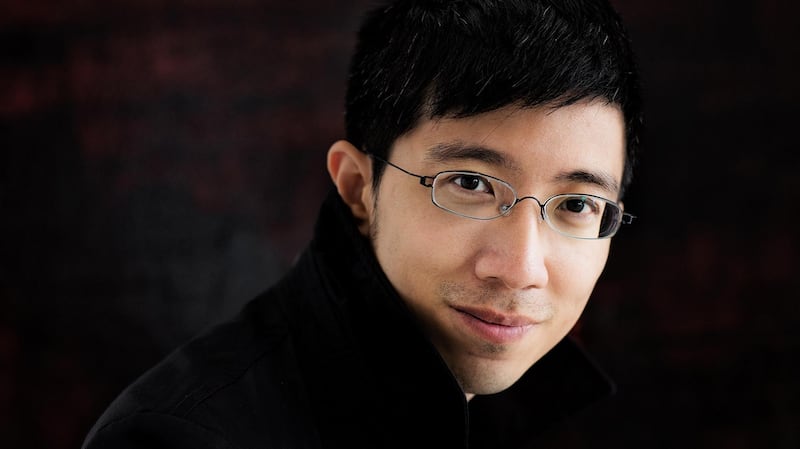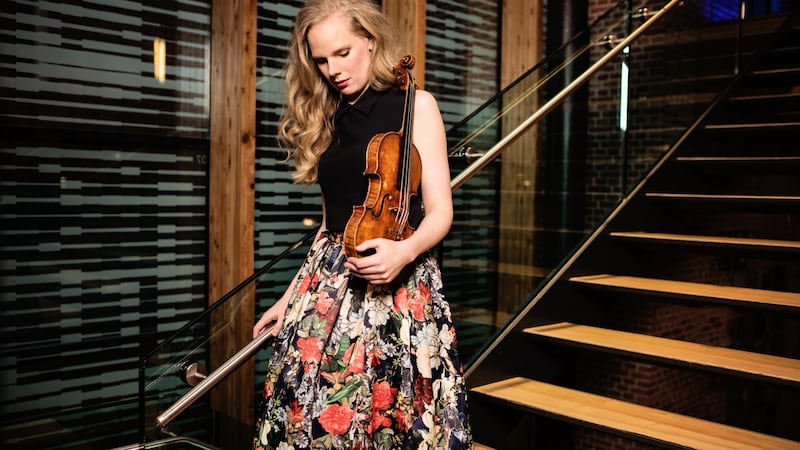If you take the overture and opening scene of Handel's Radamisto as a cue for what is to come, you will figure that you are in for a good time. And, musically, you are. But the plot, concerning tyrannical male lust, faithful wives, self-sacrifice and forgiveness among the ruling families of Asia Minor in the first century AD, is of the kind of intricacy that gets opera seria a bad name. John Crace's caustic modern slant on the libretto of Radamisto can be found on the Guardian website.
The work languished for close on 200 years before its first 20th-century revival at Göttingen in 1927 (in a German translation). It had its modern British revival at Sadler’s Wells in London in 1960, and first made it across the Atlantic, to Washington, in 1980. NI Opera’s new production, which toured to Limerick, Cork, Dublin and Belfast, is its first outing in Ireland.
Director Wayne Jordan gave the impression of not having much time for the story. He added a new part, billed simply as Actor (Michael Patrick), whose sometimes manic activities saw him moving props, leaping over furniture and even doing a series of clap push-ups. He also repeatedly rearranged the posture of characters in mid aria, tweaking the angle of a head, or adjusting the height of an elbow. This over-used gag triggered some audience laughter that punctured the mood of the music.
If Handel's Radamisto is this preposterous, why bother at all? Well, exactly because of the music, of course. The music-making, with David Brophy conducting the Irish Chamber Orchestra, was strong, sturdy but also a little stiff. The singing was mostly strong, too, but constrained by the levelling effect of Brophy's approach.
The biggest roles, both male and female, were taken by women, with Doreen Curran and Sinéad Campbell-Wallace both in impressive form as Radamisto and Zenobia. Aoife Miskelly found escape velocity as Polissena, and Kate Allen was a peculiarly frisky Tigrane, an agent of change in the plot.
The staging, with handsome costumes by Annemarie Woods and the action all set in front of a dark cave, was lit by Kevin Treacy in a style that almost suggested there were things on stage that he didn't really want us to see; the production photographs show an entirely different world. All in all, it was the kind of evening that couldn't help but bring to mind Rossini's unforgettable put-down of Wagner: "He has some beautiful moments but some bad quarters of an hour."
All-Russian programme takes all the right steppes
There was variability, too, in the RTÉ National Symphony Orchestra's all-Russian programme on Friday. Taiwanese conductor Tung-Chieh ChuanTaiwanese conductor Tung-Chieh Chuangg began the evening in great style with a vividly-coloured, lovingly-contoured account of the overture to Rimsky-Korsakov's 1898 opera The Tsar's Bride. It's always a pleasure to hear such a rarely-heard piece presented as the most cherishable of gems.

The emotional contrast with Shostakovich’s First Violin Concerto could not have been greater. The concerto is large-scale – 40 minutes – mostly dark and introspective, and opens with a Nocturne that feels like a long, slow movement, even though the composer’s marking for it is moderato.
The work was written for David Oistrakh, to whom Shostakovich had written, "I could use up tons of paper writing you compliments." And when the concerto was premiered in 1955 (having been kept in the composer's drawer for seven years because of the political atmosphere in the Soviet Union) the official Soviet musical world seems not to have known what to make of it. It was in most ways the opposite of the kind of music that the Soviet authorities wanted composers to write.
Oistrakh wrote an article in its defence. He likened the opening movement to “a suppression of feelings,” and suggested that the black scherzo which follows has something “evil, demoniac, prickly”. He also noted that the work does not “fall easily into one’s hands”.

It would be untrue to say that Friday’s soloist, Dutch violinist Simone Lamsma, made light of the difficulties. But she did give the impression of managing to squeeze every last expressive drop from the music, whether in the smouldering contemplation of the opening, the almost contortionist acrobatics of the second and fourth movements or the grave world of the third movement Passacaglia.
Tung-Chieh Chuang made sure that soloist and orchestra worked hand in glove. But, after the interval, in the suite from young Shostakovich's irreverent ballet score, The Golden Age, he frequently went over the top, creating the effect of exaggeration piled upon exaggeration. And in Stravinsky's 1919 Firebird Suite he similarly drove the music too hard. Yet when he allowed himself to revel in moments of calm he fully captured the music's gorgeous sensuality.
Orthodox tradition revived at NCH
Wednesday was the occasion of another all-Russian programme at the NCH, this time choral, and focus
ing on work from the Orthodox tradition. The great names that we know in the West are those of Tchaikovsky and Rachmaninov, with Rachmaninov providing the repertoire’s crowning glory in his All-Night Vigil (or Vespers) of 1915.
The performers on Wednesday were Nigel Short's choir Tenebrae, who broadened the perspective to add works by lesser lights Golovanov, Kalinnikov, Glinka, Chesnokov, Gretchaninov, Sheremetiev and Kedrov. It was an extended and absorbing immersion into a world where time moves at a different pace, and the low burr of bass lines dropping to unwonted depths provides a unique thrill. mdervan@irishtimes.com












